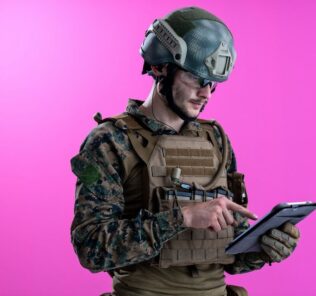The Two-Team Training Approach and Healthcare Simulation Do-overs – Why they matter!
When running a clinical simulation scenario, educators may ask themselves whether they should train a single team at a time or multiple teams simultaneously. To help shed light on this topic, HealthySimulation.com guest author, Timothy C. Clapper, Ph.D., has contributed the following informative article. Within his article, Clapper shares how he believes the healthcare simulation model can be improved through increased participation and comprehensive debriefing. He also shares how certain strategies, such as the use of a two-team approach, clinical simulation do-overs, and active observers, can help educators achieve such improvement.
I recently shared an education strategy (Clapper, 2021), that can be very effective for preparing high-performing teams. The two-team approach to simulation-based education is not just about training two teams simultaneously in the same learning environment, but rather, using the collective experiences of the team members from multiple teams to enhance learning. More on that process in a moment, but first a necessary mention of another significant strategy discussed in the same article to consider as well: healthcare simulation do-overs!
The prebrief-simulation-debrief framework is likely the most recognized framework in the medical simulation community. This framework has many benefits including its relative simplicity in design. It has been in use by the military and other institutions long before it was considered for use by healthcare educators. Absent an instruction phase (the assumption is that you have already been trained), the framework consists of a case that will be used to provide an experience for the participants.
Sponsored Content:
It is often preceded by a prebrief to prepare the learners for the case, while also asking them to suspend some judgment about realism and asking them to engage as they normally would as if it were a real patient (suspension of disbelief). Ideally, the case is followed by a debriefing to assist them with reflecting on the experience to analyze certain behaviors that may lead to improvement in performance. This framework is very efficient for many reasons but mostly because a one-hour clinical simulation-debriefing session can be repeated for many learners throughout the academic year. The problem with this framework is the lack of evidence that improvements discussed in the debriefing will ever be observed.
During the debriefing, team members may nod at the debriefer and say for example, that they will start chest compressions sooner, will use more closed-loop communication, and will debrief after every team-based event, but will they? This healthcare simulation model can be much improved if we allowed participants to engage in a follow-on medical simulation immediately after the debriefing. These Simulation do-overs provide participants with another opportunity to improve, but also to hold them to their word that they will change or alter their behaviors. Simulation do-overs are an important component in the two-team approach to healthcare simulation (Clapper, 2021).
The two-team approach to clinical simulation offers 1) improved use of training time; (2) increased training volume; (3) recognition, correction, and immediate application of desired behaviors; (4) an improved simulation do-over process; (5) improvement in self-efficacy; and (6) applicable use of research and evidence-based educational practices (Clapper, 2021). The model incorporates an active-observation strategy whereby one team of observers uses a checklist to assess a team that is actively negotiating a clinical simulation (case) experience (Clapper et al., 2018).
The observing team then assists the debriefer with the debriefing process that follows the case. Two or more teams are trained simultaneously, but more importantly, they learn with and from each other in real-time. Participants are assessed through a checklist, while learning best practices in the subject area, along with ways to enhance team performance. Observing the participating team and providing feedback is useful for supplementing the debriefing process and makes even better use of the next medical simulation case (Bethards, 2014).
Sponsored Content:
When a healthcare simulation has concluded, roles are reversed, and the active observers become active participants with a clear advantage. Typically, each healthcare simulation do-over leads to higher levels of performance. These multiple opportunities to improve, along with the continuous feedback provided by the active observation process create the high-performing teams that are needed in healthcare today.
So why do these strategies matter? I have trained teams for many years and conducted research on the effectiveness of the interventions. Initially, I prepared teams to be successful on the battlefield, and later, to save patient lives in healthcare settings. During simulations in the military in the 1980s (Gosh! It’s been that long?), I observed teams as they negotiated full-scale, squad, and platoon live-fire exercises (LFX) and debriefed afterward.
At that time, a company in the US Army was made up of three platoons, each with three squads. With at least nine squads to be trained, and using the prebrief-simulation-debrief framework, each squad had to rotate through the lanes swiftly and be out of the way, so the lane could be reset, and the next squad could have a go at it.
The LFX were loud and deafening, included limited visibility via smoke and darkness, and were often treacherous to navigate, especially at night, with logs, stumps, thick vegetation, and wait-a-minute vines lurking in the dark, waiting to take you down like the hand of a troll. The squad LFX was negotiated by one 8-person squad at a time. Squads could usually observe one another, but most did not do so. They would normally stay in the assembly or ready area and wait to be called up for their turn in the lane.
If other squads did observe, they were not provided with a set of instructions or a checklist to guide their attention toward what they were supposed to learn. Everything was in handbooks, but not everyone carried them in the field. Some of those observing would be part of the squads that would be next to traverse the challenging combat lanes. A few observers paid strict attention and others not so much. If they paid attention, their foci may have been split into several stimuli. For example, some might focus on the actions of the leader and how that person led by example (or not).
Some may notice that team members did not look for their next cover position before they got up to move and noticed that they landed in their new position fully exposed to enemy gunfire. Alternatively, the observers may have focused on the results and not so much on the process by giving attention to the number of targets being hit and knocked down by the squad member’s gunfire.
When the participating squad completed the difficult course, they were debriefed on their experiences at a semi-isolated location focused on their actions during the LFX. The next squad, has not benefitted from watching another team or told what to focus on as observers would also be alone in their experiences and debriefing when they completed the LFX.
The U.S. Army did not have experienced educators, knowledgeable about applicable learning theory running these simulated combat lanes. Just like me at that time, the folks running the healthcare simulations were noncommissioned officers (NCOs) and commissioned officers who were thrown into the simulationist roles for that exercise and many others. Many healthcare providers are in a similar situation, finding their way in medical simulation, and aside from some training courses and workshops, often lack education credentials and extensive study in connecting learning theory with practice.
My own aggressive pursuit for those education credentials, especially around instructional design would come later. Hey! Let’s give credit to the military officers/NCOs and healthcare educators providing experiences through this framework. Using this modality, countless battles in multiple combat zones have been won and patient lives saved through the medical simulation experiences provided by these simulationists. We can, however, do much better.
I remember an LFX that was etched in my memory as a young squad leader. We were the first squad to go through the lanes that evening, and we did so many things wrong. We talked about it afterward during the debriefing and learned that we hit a lot of targets, but that seemed like the only thing we did well.
I was so annoyed because the things we messed up on were tasks and principles we drilled on often. Fortunately, we would have another opportunity for a re-do later in the evening if time permitted. In the meantime, I and my squad members watched other teams have their turn through the course. We saw them making some of the same mistakes but also watched them doing some things extremely well. When it was our time to go back through the lane, our LFX performance was a sight to see. Unknowingly, the commanding general-operations was out that evening observing training and observed our squad in action.
He shared with us that it was one of the best squad live fires he had ever seen. I was thankful he witnessed that episode and not the one in the earlier iteration! There were several key behaviors that were honed that evening that would stay with me through many major military exercises, conflicts, and combat operations.
The term experiential learning is often over-used in the literature and in conversation when referring to how medical simulation can be useful in the education process. The reflective experience and the concrete experience are emphasized, but the variable that is often present but left out of the experiential learning cycle is the vicarious experience.
When teams of two or more people are together, we can learn with and from each other. I encourage healthcare simulationists to dig deeper and have a look at the article on this subject (Clapper, 2021). The next time you train teams, give them a chance to demonstrate that they will change and give them an opportunity to learn what others are seeing and doing. One way or another, many lives could be at stake.
References:
Bethards, M. L. (2014). Applying Social Learning Theory to the observer role in simulation. Clinical Simulation in Nursing, 10(2), e65–e69. https://doi.org/10.1016/j.ecns.2013.08.002
Clapper T. C. (2021). Getting better together – The two-team training approach in simulation-based education. J Contin Educ Nurs.52(9), 417-422. https://doi.org/10.3928/00220124-20210804-07
Clapper, T. C., Rajwani, K., Mauer, E., Gerber, L. M., Lee, J. G., Ching, K., Miller, S., & Gudi, K. (2018). A brain-based instruction simulation approach to improve code team response in an internal medicine unit. Simulation & Gaming, 49(5), 479–496. https://doi. org/10.1177/1046878118794992
Timothy C. Clapper, PhD, is an educator-researcher with proven mastery for creating and facilitating differentiated lesson plans. He authored many popular and well-cited, academic publications oriented toward advanced learning, best-practices in clinical performance, teamwork, and retention and transfer in learning. He has also turned around programs in academia, assisted educators with improving their craft, started a new $10M multidisciplinary simulation center, reorganized a major nursing simulation center for efficiency, and developed healthcare simulation fellowship programs.
Sponsored Content:





















